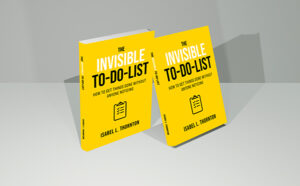
Autistic burnout can feel endless. When you’re in it, it’s easy to believe you’ll never get your energy, focus, or joy back. But recovery is possible—and sometimes, the best way to believe that is to hear from others who’ve been there.
In Embracing Self-Care for Autistic Burnout: Your comprehensive resource for managing autistic burnout, we present real-life case studies of autistic adults who moved from crisis to clarity—not by “fixing” themselves, but by learning how to support their needs in a world not built for them.
These stories are powerful reminders: burnout doesn’t mean you’re broken. It means it’s time to realign, reframe, and reclaim your well-being.
Case Study 1: Lucas – From Workplace Collapse to Low-Demand Productivity
Lucas was a high-performing software developer working 60-hour weeks in a chaotic open office. After months of masking, sensory overload, and unrealistic deadlines, he experienced total burnout: insomnia, verbal shutdowns, and constant anxiety.
His recovery began when he transitioned to remote work with structured flexibility. He used tools like:
- Noise-canceling headphones
- Predictable routines with built-in rest breaks
- Text-only communication boundaries
“I stopped trying to work like everyone else—and started working like myself.”
Case Study 2: Nina – Rebuilding Life After University Burnout
Nina, a graduate student, pushed herself through lectures, social expectations, and daily masking until she hit a shutdown that lasted weeks. She lost interest in her thesis, couldn’t maintain basic routines, and isolated herself from friends.
With help from a neurodivergent life coach, Nina rebuilt her days around:
- Energy mapping and pacing
- Comfort activities (reading the same book daily)
- Low-pressure journaling
- Reframing productivity as “presence” rather than performance
Today, Nina has restructured her course timeline and leads a small support group for other autistic students.
Case Study 3: Janelle – Reclaiming Sensory Safety in Family Life
Janelle, a mother of two, didn’t realize she was autistic until after her second child. Years of sensory overload, people-pleasing, and unmet needs left her in burnout so deep she could barely function.
Her healing began by carving out “sensory retreats” at home:
- A quiet room with blackout curtains and fidget tools
- Scheduled “mute hours” each day
- Family communication based on visual cues and check-ins
- Celebrating her neurodivergent identity openly
“I used to think I had to hide. Now my whole family knows what support really looks like.”
Common Threads in Successful Recovery
Across all stories in the book, we noticed a pattern:
- Recovery isn’t quick—but it is real
- Rest is foundational—not optional
- Personalized sensory environments make a massive difference
- Community support (even small) matters
- Redefining success helps sustain long-term healing
These Stories Could Be Yours, Too
Every story of recovery starts with a moment of recognition: “I can’t do this anymore.” But what comes next doesn’t have to be scary or lonely. With the right tools, pacing, and self-compassion, balance is not just a dream—it’s a goal you can reach.
In Embracing Self-Care for Autistic Burnout, you’ll find more case studies, practical tips, and expert strategies to help you move from survival to stability.
🟢 Get the book that’s changing how autistic burnout is understood—and recovered
💬 “These case studies gave me hope I didn’t even know I needed. I saw myself on every page.”
Author
-

Laura Mitchell writes with a focus on supporting autistic adults and those navigating the challenges of autistic burnout. Drawing on personal experiences and countless conversations within the neurodivergent community, she creates resources that are compassionate, practical, and easy to follow. Her work is grounded in a belief that autistic voices deserve to be heard and understood, and that self-care should be accessible and validating for everyone. Through her books, Laura aims to provide encouragement, clarity, and strategies that help readers build lives that feel sustainable and authentic. When she’s not writing, Laura enjoys quiet routines, creative hobbies, and walking in the hills close to her country home.




